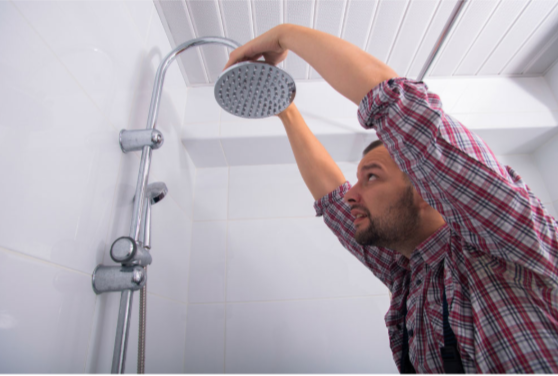
Pre-finished hardwood arrives with the protective coating already on, saving you time and mess. Water-based polyurethane stays clear, oil-based adds warm amber tones, aluminum oxide resists scratches like crazy, and natural oils give that matte, authentic look. Textures range from smooth and modern to wire-brushed rustic or hand-scraped antique. Sheen levels matte, satin, semi-gloss, and high-gloss change how your floors look and how much cleaning they need.
Pre-finished hardwood floors show up at your house already sealed and ready to walk on right after they’re installed. The coating protects against scratches and stains while deciding how your floors look and feel. Picking between finishes and textures for pre-finished flooring can feel overwhelming with all the choices out there. Should you go glossy or matte? Smooth or textured? Each option gives you different benefits for how long they last, how they look, and how much work they take to maintain. Understanding what’s what helps you choose floors that fit your life and style.
What Are the Popular Types of Finishes for Pre-Finished Hardwood?
Pre-finished flooring comes with several coating choices, each doing something different. Knowing these helps you pick what works for your home.
Water-Based Polyurethane
Water-based polyurethane creates a clear protective layer that won’t turn yellow as it ages. It dries fast, doesn’t smell bad, and keeps wood looking its natural color. This works great for lighter woods like maple or ash when you want to keep that original tone.
What you get:
- Lasts about 10-15 years if you take care of it
- Easy cleanup without nasty chemicals
- Better for the environment
- Cleaner air in your house
Oil-Based Polyurethane
Oil-based polyurethane adds a warm amber color that makes wood darker and really shows off the grain. It’s super tough and creates a hard surface that handles heavy foot traffic like a champ.
Why people like it:
- Takes longer to dry than water-based
- Adds rich warmth to oak, walnut, and darker woods
- Goes deeper into the woods
- That classic wood floor look
Aluminum Oxide
Aluminum oxide is the toughest finish you can get. They mix in tiny ceramic particles that make it incredibly hard and scratch-resistant, way better than regular polyurethane. This finish is best for busy hallways and kitchens, homes with kids running around, houses with pets, and anywhere you need serious durability. Just know that when it’s time to refinish years down the road, this stuff is really hard to sand through because it’s so tough.
Acid-Cured (Swedish) Finish
Acid-cured finishes cure through a chemical reaction instead of just drying. They create an incredibly hard, super glossy surface that shows off wood grain beautifully. Sometimes called Swedish finish, this is the hardest of the traditional finishes. The strong fumes during application aren’t a problem with pre-finished floors since that happens at the factory, not in your home.
What makes it special:
- Resists moisture and chemicals better than most
- Creates the hardest surface around
- Ultra-shiny mirror-like look
- Perfect for modern or fancy spaces
Hardwax Oil & Natural Oils
Natural oil finishes soak into the wood instead of sitting on top like polyurethane. They create a matte, natural look that feels warm and real under your feet. The downside? You need to reapply it every year or two, and it doesn’t protect against moisture as well as polyurethane. Better for bedrooms than kitchens.
Cool features:
- Easy to fix spots without redoing the whole floor
- Low-sheen look for casual styles
- Feels authentic and warm
- Great for farmhouse and Scandinavian looks
What Finish Textures and Sheen Levels Are Available?
How your floor’s surface is treated and how much it shines really changes the whole look and feel. These choices affect both how it looks and how practical it is day-to-day.
Understanding Sheen Levels
Sheen is basically how much light bounces off your floor. Different levels create different looks and affect how much cleaning you’ll do:
- Matte: Almost no shine, hides scratches and dust really well, modern vibe
- Satin: Just a bit of shine, most people pick this one, good middle ground
- Semi-gloss: You can see the shine, which makes rooms brighter, and shows marks more clearly
- High-gloss: Mirror-like shine, formal look, needs lots of cleaning
Matte and satin are way easier to keep clean because they don’t show every footprint or speck of dust. Glossy looks amazing, but you’ll be cleaning more to keep that shine.
Wire-Brushed Texture
Wire-brushing takes out the softer wood between the harder grain lines, creating texture and depth you can see and feel. This gives you that aged, rustic look while still being smooth enough for bare feet. It hides little scratches way better than smooth floors, adds that rustic character people love, gives you better grip, so it’s safer, and is perfect for farmhouse and cottage styles.
Hand-Scraped Texture
Hand-scraped floors look like old-time floors that were shaped by hand tools. Each board has unique marks and little irregularities that give it that old-world, handmade appearance. What’s great about it is that it hides scratches and dents like nobody’s business, adds serious visual interest, works with traditional and eclectic styles, and feels different and interesting under your feet. The deeper grooves can catch more dirt, so you might need to clean a bit differently than smooth floors.
Smooth Texture
Smooth finishes give you that sleek, polished look that shows off wood’s natural beauty without anything getting in the way. This classic choice works with basically any style from super modern to traditional. Smooth floors feel silky smooth underfoot, are super easy to clean since there’s no texture to trap dirt, reflect light nicely, making rooms feel bigger, and go with any design style you can think of. The catch is that scratches show up more easily on smooth surfaces. Works best in rooms that don’t get pounded on as much.
How Do You Choose the Right Finish and Texture?
Picking the perfect finish and texture combo depends on real-life stuff and how you want your place to look. Think through these things before deciding.
How you use the room matters big time. Kitchens, hallways, and living rooms with lots of traffic need tough finishes like aluminum oxide and textures that hide wear like wire-brushed or hand-scraped.
What style fits your home:
- Modern/Contemporary: Smooth, matte, or satin
- Traditional/Classic: Smooth or lightly textured, satin or semi-gloss
- Rustic/Farmhouse: Wire-brushed or hand-scraped, matte or satin
- Formal/Elegant: Smooth, semi-gloss, or high-gloss
How much time you have for cleaning is huge. Busy households should go with matte or satin sheens and textured surfaces that forgive imperfections. If you actually enjoy keeping floors spotless and have the time, glossier and smoother can work.
Life stuff to think about:
- Got pets? How long are their nails?
- Kids and how active they are
- Do you wear shoes inside?
- How much sun hits your floors
- How often do you realistically clean
What Maintenance Tips Apply to Different Finishes?
Different coatings need different care to last longer and keep looking good.
For Water-Based Polyurethane
This finish needs regular sweeping and occasional damp mopping with cleaners made for hardwood. Don’t use too much water or harsh chemicals. They’ll dull the finish.
Take care of it by:
- Recoating every 3–5 years in busy spots
- Using pH-neutral cleaners only
- Staying away from ammonia-based products
- Wiping up spills right away
For Oil-Based Polyurethane
This type can handle a bit more moisture than water-based, but it needs similar care. The amber tone might deepen slightly over time, something many people actually like.
Maintenance tips:
- Clean with mild hardwood-safe cleaners
- Recoat every 5–7 years if needed
- Avoid excessive water during cleaning
For Aluminum Oxide Finish
This one’s super low-maintenance and extremely durable. Regular sweeping and light damp mopping with a mild cleaner are usually enough.
Why it’s easy:
- Recoating only every 5–7 years, even in high-traffic areas
- Simple cleaning routine
- Very resistant to scratches and wear
For Natural Oil Finishes
These need more frequent attention since oils don’t block moisture as well. Clean up spills quickly and refresh the surface with oil once or twice a year.
Keep it looking good by:
- Reapplying oil annually (or twice a year in busy areas)
- Avoiding standing water or heavy moisture
- Using a soft cloth or mop for gentle cleaning
General Maintenance Tips for Any Finish
No matter what coating you have, good habits go a long way.
- Put felt pads under furniture legs
- Use mats at entryways to trap grit
- Keep pet nails trimmed
- Wipe spills immediately, especially water
- Avoid steam mops as they’re too wet
- Stick with manufacturer-recommended cleaners
Bonus Tip: Textured surfaces might need soft brushes to clean the grooves, while smooth pre-finished floors work best with a microfiber mop.
Final Thoughts
Picking the right finish and texture for your pre-finished hardwood means balancing how tough it needs to be, how you want it to look, and how much maintenance you’re willing to do. Water-based keeps things natural, while oil-based adds warmth. Aluminum oxide gives you maximum protection for active spaces. Natural oils create that authentic matte look, but need more attention. The right combo means pre-finished flooring that looks amazing and performs great for years.
Rustic Wood Floor Supply has a huge selection of pre-finished hardwood covering every finish and texture we talked about. The showroom lets you compare water-based clarity, oil-based warmth, and aluminum oxide toughness side by side. Walk on wire-brushed, hand-scraped, and smooth samples so you can actually feel the differences before you buy. The team knows their stuff and helps match finishes and textures to what you actually need based on traffic, design, and how much maintenance you want to do.
Frequently Asked Questions
1. What are the most common finishes for pre-finished hardwood floors?
Common finishes include polyurethane (water-based and oil-based), aluminum oxide, and natural oils, each offering different durability levels and looks.
2. What finish gives the best scratch resistance on hardwood floors?
Aluminum oxide finishes provide the best scratch and wear resistance with ceramic particles mixed in, ideal for high-traffic areas.
3. Which finish sheen levels are available for pre-finished hardwood?
You can get matte, satin, semi-gloss, and high-gloss options, each creating different looks and requiring different amounts of cleaning.
4. What are the top texture styles for pre-finished hardwood floors?
Popular textures include wire-brushed, hand-scraped, distressed, and smooth finishes, each giving a unique feel and appearance.
5. How do I choose a finish or texture for my needs?
Base your choice on how you use rooms, traffic levels, your design style, cleaning habits, and how much aging or patina you want.
6. Are matte or glossy finishes easier to maintain on hardwood floors?
Yes, matte and satin finishes hide scratches and dust way better than glossy surfaces, making them much easier for busy households.







